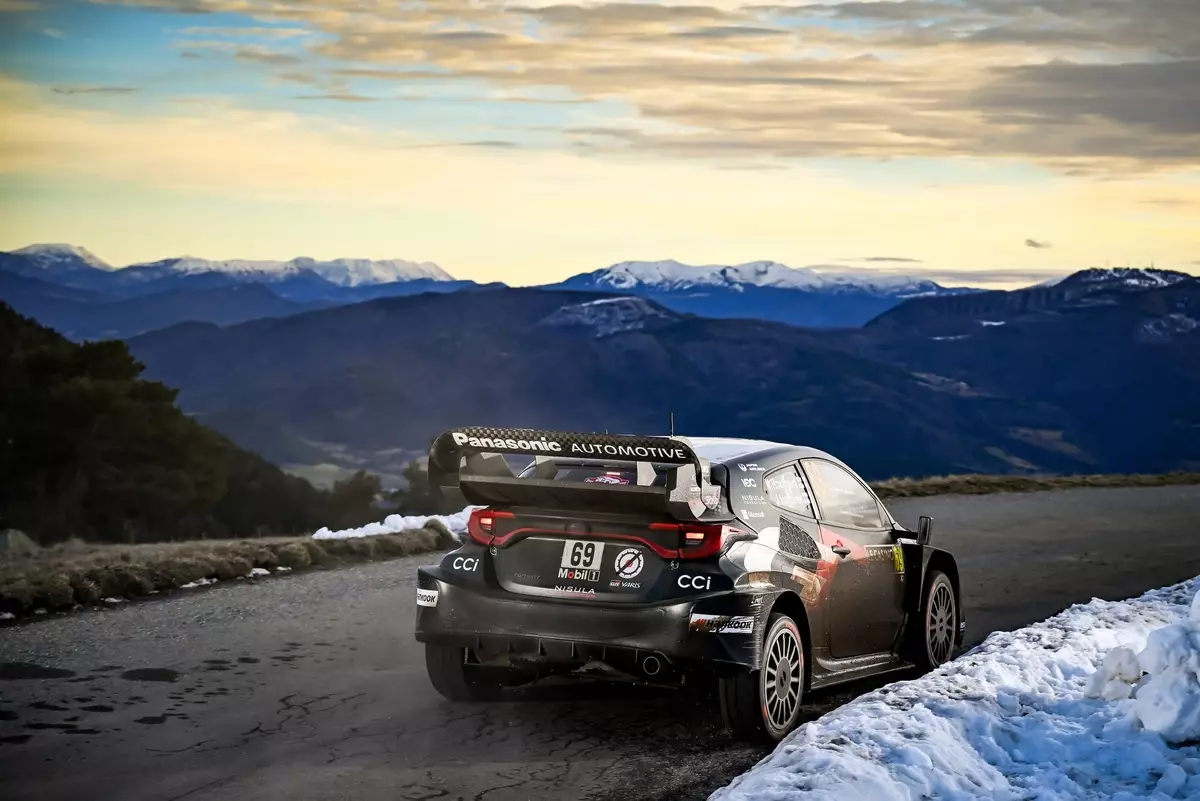As Kalle Rovanpera embarks on his full-time return to the World Rally Championship (WRC), he finds himself grappling with a pivotal adjustment in his driving technique. The two-time world champion has acknowledged that his conventional driving style may not sync well with the new Hankook control tyres, particularly the slick variant he encountered during the Monte Carlo rally. Despite his initial struggles, Rovanpera exhibited resilience, demonstrating his ability to navigate fluctuating conditions and secure a commendable performance, concluding the first day in the fourth position, trailing behind his experienced teammate, Sébastien Ogier.
Rovanpera’s candid insights reflect a profound understanding of the nuances involved in competitive rally driving. His statement, acknowledging the need for adaptation, reveals not just humility but also the adaptability that champions must possess. “I think overall it is pretty clear that maybe the driving style that I normally have doesn’t work with the slick [tyre],” he explained. This self-awareness is crucial in sports, particularly in an environment as unpredictable as rallying, where conditions can change dramatically and unexpectedly.
The Importance of Tire Management
One of the most critical aspects of rally racing lies in effective tire management. Rovanpera emphasizes that while he has found a competitive rhythm on snow and studded tires, the slicks present a distinct challenge. “We did some small setup things that were slightly better in the afternoon but clearly, it is not enough,” he noted, highlighting the complex relationship between car setup, driving style, and tire performance. This multifaceted issue underscores the intricacies that drivers must navigate in their pursuit of speed and stability.
Rovanpera’s experience reflects a broader truth in motorsport: the imperative to continuously evolve. The WRC’s introduction of the Rally1 car concept marked a significant shift in racing dynamics in 2022, and while Rovanpera managed to adapt swiftly at that time, the slick tires have presented a new hurdle. His quest for a balance between speed, tire performance, and driving technique remains a pressing concern as he conducts further evaluations during the Monte Carlo event.
Rovanpera’s challenges are further contextualized within the broader performance of his team, Toyota. On the Friday of the Monte Carlo rally, the Japanese manufacturer showcased its dominance, placing three of its five cars in the top four positions. Sébastien Ogier, a seasoned nine-time Monte Carlo winner, has led the charge for Toyota, illustrating how experience can influence competitive outcomes clearly. His remark, “Experience is always helping in this moment,” speaks to the additional layer of strategy that seasoned drivers must navigate in high-stakes rallying.
Ogier’s ability to secure victory in the emotional terrain of his home stage highlights the interplay between personal connections and athletic performance. While he grappled with the morning’s rhythm, his persistence allowed him to find his stride and capitalize on the event’s emotional significance. The race dynamics pose a compelling narrative: while Rovanpera seeks to unlock the potential of his driving style against the backdrop of evolving tire technology, his teammates leverage their extensive experience to carve a path to success.
Kalle Rovanpera remains focused on the road ahead, expressing hope for continuous improvement as the rally unfolds. Acknowledging the challenges he faces, he optimistically stated, “A top four from this rally would be okay, but I should be able to be at a bit better pace.” This drive to not only strive for competitive placement but also for personal growth speaks to the resilience ingrained in champions. His journey exemplifies a broader narrative within sports: that of overcoming hurdles, learning, and evolving.
As the Monte Carlo rally continues, all eyes will be on Rovanpera to see how he navigates these complexities both on the track and within the dynamics of his team. The balance of historical significance, technological evolution, and personal experience will characterize this season of the WRC and Rovanpera’s pursuit of greatness. His ability to adjust and thrive amidst these challenges is what will ultimately define his current campaign and shape his future endeavors in the championship.


Leave a Reply